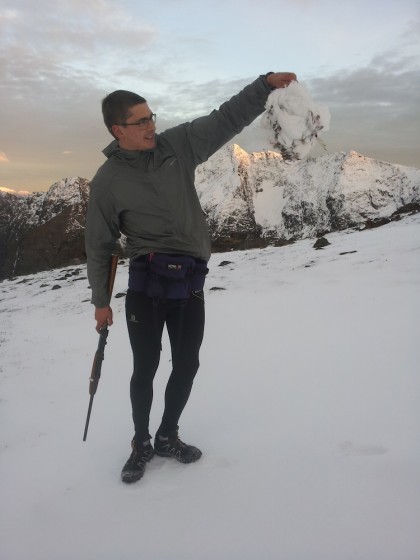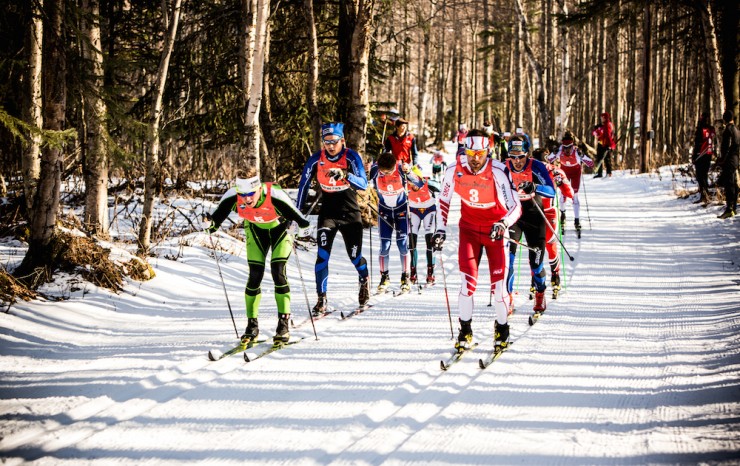
This week’s workout comes from Alaska Pacific University (APU) skier Lex Treinen, who finished the season off with two fifth-place finishes at SuperTour Finals and U.S. Distance Nationals in Anchorage, Alaska, and a win in the Ski to Sea (run, bike, ski) race on March 30.
After months structured training April is the time most skiers get to enjoy the unstructured exploring on skis and to remember the primal joys that skiing brings. While most of us aren’t lucky enough to scooch around on handmade spruce-wood skis waiting to lasso wild elk with horse-hair lariats like the Tuvan in Northern China (see National Geographic Dec. 2013), there are other ways to reconnect to nature through skiing.
A few times this year I was lucky enough to combine hunting and fishing expeditions with legitimate ski training with my teammates, and April may be the best time of year for skiers to practice this type of training without the pressure of reaching time goals or heart rate zones.

Planning: Near Anchorage there are dozens of nearby accessible areas for ptarmigan and grouse hunting or salmon fishing, but most take at least a few miles of running, hiking, skiing or even bicycle riding. The most important thing is to know the local fishing and hunting regulations and boundaries which you can find in booklets available at most large supermarkets and at Fish and Game offices.
The best way to find routes is to ask experienced people. Equipment-wise I like to travel as light as possible to maximize the speed and thus the thrill of endurance harvesting. Usually, all you need is a pocket knife, a plastic bag and a gun or fishing pole packed in a light backpack or carried by hand. Of course if you are using a gun, NEVER have it loaded unless you are on sure footing and expecting to shoot. I don’t even take out a bullet until I am ready to shoot, though ptarmigan will usually stay in one place long enough for that extra time.
Fishing poles are much easier if you know which bait or lure you will be using in advance. You can run with just a string, a small leatherman, a couple extra lures, and a pole.
The workout: The actual workout will depend on route and technique. Usually for me, workouts like this involve a five-mile run or ski and then a pause to either start casting into the lake or river, or searching for game animals.
Sprinting from boulder to boulder to hide from expecting animals gets my blood pumping and also of course is nice form of fartlek training [varied intervals]. For me the most enjoyable workouts are those when I can really get into the zone and reconnect with your caveman roots, when I stop thinking about anything but getting that warm fish or bird in your hands to eat for dinner, Gollum-style.
You might notice that your senses are sharpened and you can feel minute changes in the wind direction or air temperature. This hyper-vigilance I think is transferrable to the act of ski racing, in which the single minded focus on the goal of finishing first paradoxically expands the perception of everything around you.
“Sprinting from boulder to boulder to hide from expecting animals gets my blood pumping and also of course is nice form of fartlek training.”
In the end of course it doesn’t matter if you are successful — lord knows I usually am not — but the workout isn’t about success, it’s about using the endurance you have built up over the season to do things and go places that the average motorbike riding outdoorsman can’t. It’s also about feeling the outdoor roots of the sport and feeling the Tuvan nomad inside of you. Have fun and be SAFE!





One comment
Tim Kelley
April 9, 2014 at 4:37 pm
I’m wondering if maybe you APU guys could keep it down when you are out hunting at night. All that Tuvan throat singing from the ridges above Anchorage scares people and freaks out our dogs and cats. Thanks. 😉